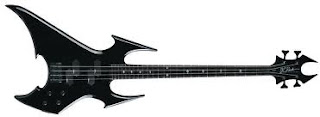ACOUSTIC GUITAR
An acoustic guitar can be amplified by using various types of pickups or microphones. The most common type of pickups used for acoustic guitar amplification are piezo and magnetic pickups. Piezo pickups are generally mounted under the bridge saddle of the acoustic guitar and can be plugged into a mixer or amplifier. Magnetic pickups are generally mounted in the sound hole of the acoustic guitar and are very similar to those found in electric guitars.
Instruments with larger areas for the guitar top were introduced by Martin in an attempt to create louder volume levels. The popularity of the larger "dreadnought" body size amongst acoustic performers is related to the greater sound volume produced.
ELECTRIC GUITAR
An electric guitar is a guitar that uses the principle of electromagnetic induction to convert vibrations of its metal strings into electric signals. Since the generated signal is too weak to drive a loudspeaker it is amplified before sending it to a loudspeaker. Since the output of an electric guitar is an electric signal, the signal may easily be altered using electronic circuits to add color to the sound. Often the signal is modified using effects such as reverveb and distortion Arguably, no other musical instrument has had more of an impact on how music has evolved since the beginning of the twentieth century than the electric guitar. Conceived in 1931, the electric guitar became a necessity as jazz musicians sought to amplify their sound. Since then, it has evolved into a stringed musical instrument capable of a multitude of sounds and styles. It served as a major component in the development of rock and roll and countless other genres of music.
ELECTRO-ACOUSTIC GUITAR
TWELVE STRING GUITAR
The twelve-string is usually an acoustic though twelve-string electric guitars are available. Twelve-string guitars are not the same as double-neck guitars. Double-neck guitars are essentially two guitar necks bolted onto one body. Twelve-string guitars have the regular six strings and a second set of thinner strings with each string of the second set corresponding to the note of its regular string counterpart. The second set of strings are tuned an octave higher. The strings form pairs; so you still play the guitar in the same manner as a standard six-string.
Twelve-string guitars produce a brighter and more prominent tone and are harder to play than a standard six-string guitar. They are usually confined to niche roles, such as rhythm guitar. The additional strings require more pressure to press down and bending notes also requires an extra muscular effort. Twelve-string guitars are more expensive to buy than the standard acoustic or electric and may need more maintenance because of the strain the additional strings place on the neck.
BASS GUITAR
DOUBLE-NECK GUITAR






No comments:
Post a Comment